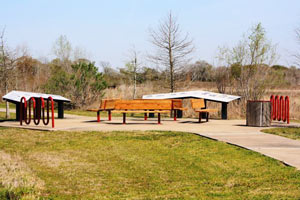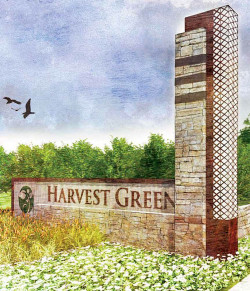HOUSTON AND SAN ANTONIO COMPANIES JOIN UP IN SPROUTING TEXAS POT MARKET Meanwhile, in La Vernia: Kyle Hagerty provides an update on Houston-based aeroponics company Indoor Harvest’s plan to team up with San Antonio-based Alamo CBD in an attempt to become of the medical pot dispensing organizations the state of Texas will have to license as part of the 2015 Texas Compassionate Use Act. If all goes as planned, Indoor Harvest and Alamo will merge, then set up a 10-acre property in La Vernia, TX, to provide Vermont-based Vyripharm with pot products of specific chemical profiles — most importantly, with consistent levels of cannabidiol, a non-psychoactive pot compound being studied for potential treatment of certain cancers and forms of epilepsy. Vyripharm, in turn, is setting up research agreements with a bunch of medical institutions in Houston and Galveston.  Hagerty notes that legal pot is one of the fastest growing industries in the country — though as UH professor Gina Warren pointed out this summer, indoor pot farming is a hugely energy- and water-intensive industry, with little regulatory infrastructure in place yet to address potential local or regional impacts. [Houston BisNow]
Tag: Agriculture
RE-PEARING THE PEARLAND BRAND  The Pearland Convention and Visitor’s Bureau is now selling sponsorships for the 4-ft.-tall decorated fiberglass pears it plans to place around the city to generate enthusiasm from tourists and boost the organization’s branding efforts. Executive director Kim Sinistore tells Amy Bishop that the group “would like to bring pears back to Pearland in the landscaping.†The Pearland city government’s account of the area’s history, however, largely glosses over the importance of pears, instead playing up the historic importance of figs to the region (particularly after the settlement’s  near-destruction by the 1900 Galveston hurricane, and second near-destruction by the storm of 1915). A donation of $4000 gets your name and logo onto a plaque by the themed pear of your choice (on a first-come-first-serve basis), along with other perks; sponsors can also go in on a pear with a friend and split the price. [Houston Public Media, City of Pearland] Photo of Shadow Creek Ranch Nature Trail, one of 5 planned pear deployment zones: City of Pearland
The Pearland Convention and Visitor’s Bureau is now selling sponsorships for the 4-ft.-tall decorated fiberglass pears it plans to place around the city to generate enthusiasm from tourists and boost the organization’s branding efforts. Executive director Kim Sinistore tells Amy Bishop that the group “would like to bring pears back to Pearland in the landscaping.†The Pearland city government’s account of the area’s history, however, largely glosses over the importance of pears, instead playing up the historic importance of figs to the region (particularly after the settlement’s  near-destruction by the 1900 Galveston hurricane, and second near-destruction by the storm of 1915). A donation of $4000 gets your name and logo onto a plaque by the themed pear of your choice (on a first-come-first-serve basis), along with other perks; sponsors can also go in on a pear with a friend and split the price. [Houston Public Media, City of Pearland] Photo of Shadow Creek Ranch Nature Trail, one of 5 planned pear deployment zones: City of Pearland
FARM-THEMED PLANNED COMMUNITY RIPENING ALONG THE WESTERN GRAND PARKWAY Hous ton’s first farm-centric master-planned community is moving forward on the Grand Parkway along Oyster Creek in Richmond, writes Paul Takahashi of the HBJ. The Harvest Green residential community will be structured around working farms and themed accordingly throughout: in addition to opting for a backyard planter (available in L-shaped or rectangular), residents can elect to work a plot in a 5-acre community garden, part of the 300 acres of farmable land that will be associated with the development. Not sure what to do with a backhoe? An on-site farmer will offer classes in both agriculture and nutrition. Those less keen to get their hands in the dirt will be able to visit the farm-to-table restaurant instead — or simply partake of the edible landscaping. Johnson Development has recently opened model homes at the site, and is currently constructing non-model homes as well. [HBJ] Photo: Johnson Development
ton’s first farm-centric master-planned community is moving forward on the Grand Parkway along Oyster Creek in Richmond, writes Paul Takahashi of the HBJ. The Harvest Green residential community will be structured around working farms and themed accordingly throughout: in addition to opting for a backyard planter (available in L-shaped or rectangular), residents can elect to work a plot in a 5-acre community garden, part of the 300 acres of farmable land that will be associated with the development. Not sure what to do with a backhoe? An on-site farmer will offer classes in both agriculture and nutrition. Those less keen to get their hands in the dirt will be able to visit the farm-to-table restaurant instead — or simply partake of the edible landscaping. Johnson Development has recently opened model homes at the site, and is currently constructing non-model homes as well. [HBJ] Photo: Johnson Development
CROWDING THE HOUSTON DINNER PLATE “According to USDA maps, we still have about 3.2 million acres of prime farmland within 100 miles of Houston. We can’t produce everything we like and want to eat. No cacao trees for chocolate here, for example. A more relevant question is whether we could supply most if not all of our basic needs from soils within a hundred miles or so. I think the answer is yes. The amount of land to support one person varies in the scientific literature from less than an acre to 20 or so acres. With 4 million people, we would likely need at least 2-4 million acres of farmland. But we are expecting 3.5 million more people by 2035. So not only will there be more people to feed, there will be less land to feed them from, locally. If current density and development practices continue, we can expect to lose at least 1,000 square miles of prime farmland, prairie, and forest habitat to development.” [OffCite]

